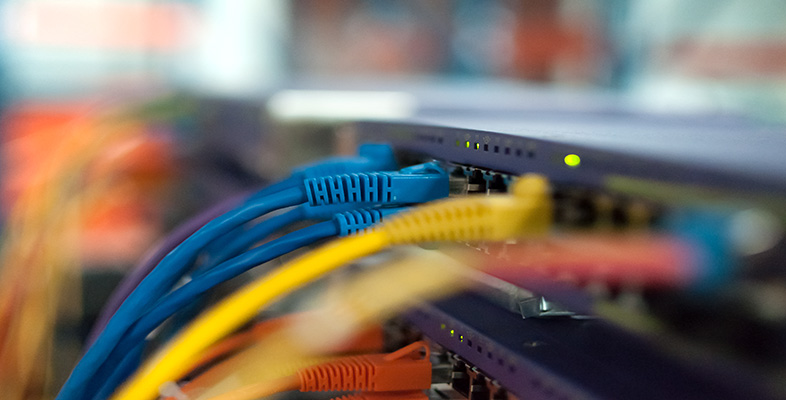6.5 Smart home networks
Some devices in a smart home may need to communicate information about the environment (for example, information about light, heat, humidity, sound, movement, water levels, etc.). They may also need to communicate to:
-
give information about their state (for example, activated, deactivated, faulty);
-
give temporal information (for example clock time, lapsed time, delays);
-
instruct, interrogate or acknowledge another device.
Such information can generally be represented with a few tens of bits of data. This is extremely small compared to the quantity of data needed to represent, say, a voice signal, an image, or a few seconds of video. Because of this the data rate requirement of a smart home's networks is extremely low – a fraction of the capability of the network technologies you met earlier (Ethernet, WiFi and Bluetooth).
Many monitoring and control devices used in the home need to be active only for short periods, with relatively long periods of inactivity in between. (In the world of electronic communications 'long periods' could refer to fractions of a second.) For example, a device may need to check only periodically to see if its controller has a message for it, and the rest of the time it can 'sleep'. The ratio of activity to inactivity is known as a duty cycle and is generally expressed as a percentage. As an example, we'll examine a device that typically connects to a network and transmits for 15 milliseconds in every second. (A millisecond is 1/1000th of a second and is indicated by the symbol ms – m for 'milli' and s for 'second'.) First we need to express 15 milliseconds in seconds:
Next we need to express 0.015 seconds as a percentage of 1 second:
So in this particular example, the device has a typical duty cycle of 1.5%. That is, it is active for only about 1.5% of the time.
Activity 27: self-assessment
Calculate the duty cycle of a device that typically connects to a network and transmits for 20 ms in every 0.5 s.
Answer


Monitoring and control devices used in the home also tend to be tolerant of delays between the sending of a message and a response. In the earlier example of the water tank, a delay of a few seconds between the water temperature falling to the trigger point and the heater switching on would be quite acceptable. (Again, in the world of electronic communications 'long' delays can be measured in terms of milliseconds.)
So, a typical device used in a smart home network has three characteristics that result in very low data-rate requirements. These are:
-
the small quantity of data needed to represent the signal;
-
the low duty cycle;
-
the tolerance to delay.
Activity 28: exploratory
Would either Bluetooth or WiFi provide suitable candidates for a 'smart home' wireless network?
Discussion
Although Bluetooth and WiFi operate at data rates far in excess of the requirement, neither would provide good solutions for a smart home network. WiFi devices need some kind of NIC which would make them bulky, and WiFi is 'energy hungry'. For devices (such as a smoke alarm) that rely on battery power, this could lead to frequent battery changing. Although power consumption is less of a problem with Bluetooth (because of its lower energy requirements), it would nevertheless be significant in a multi-device installation. Furthermore, Bluetooth has an operating range of up to only 10 m and this is reduced in situations where there are physical barriers such as walls and windows.
There are a number of wireless technologies specifically designed for home automation networks. In the next section we're going to introduce one that is, at the time of writing, still in its development stage, with no commercial products available on the market. We've chosen it because it looks likely to become a key player in smart home technology – but perhaps you will be in a better position to judge whether this prediction has come true. The system is called ZigBee.


